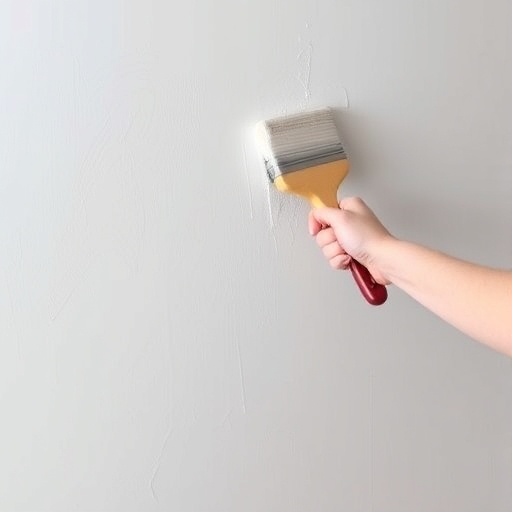How Long After Primer Can You Paint?
Painting can be a rewarding DIY project, but it’s crucial to understand the steps involved to achieve a professional finish. One of the most frequently asked questions among homeowners and DIY enthusiasts is, “How long after primer can you paint?” In this guide, we will explore the factors that influence drying times, the types of primers available, and best practices for painting over primer.
Understanding Primer
What is Primer?
Primer is a preparatory coating applied before painting. Its primary functions are:
- Sealing the Surface: Primer helps to seal porous surfaces, preventing the paint from soaking in unevenly.
- Adhesion: It provides a better surface for the paint to adhere to, improving the longevity and durability of the paint job.
- Color Correction: Primer can help to cover dark colors or stains, allowing the topcoat to achieve true color.
- Oil-Based Primer:
- Drying Time: Typically takes 24 hours to dry.
- Best For: Wood, metal, and surfaces with stains.
- Water-Based Primer:
- Drying Time: Usually dries to the touch within 30 minutes to 1 hour.
- Best For: Drywall, plaster, and previously painted surfaces.
- Shellac Primer:
- Drying Time: Dries quickly, often within 15-30 minutes.
- Best For: Stains, odors, and sealing knots in wood.
- Type of Primer Used
- Humidity and Temperature Conditions
- Surface Material
- Ventilation
- Humidity: High humidity can extend drying times. If the air is moist, it may take longer for the primer to dry completely.
- Temperature: Cooler temperatures can also slow down the drying process. Ideally, paint and primer should be applied in temperatures above 50°F (10°C).
- Ventilation: Good airflow can help speed up the drying time. Ensure the area is well-ventilated when applying primer and paint.
- Clean the Surface: Remove dust, dirt, and debris.
- Check for Imperfections: Fill any holes or imperfections with a suitable filler and sand smooth.
- Lightly Sand the Primer: For optimal adhesion, lightly sand the primer surface with fine-grit sandpaper.
- Compatibility: Ensure the paint is compatible with the primer type (oil-based or water-based).
- Finish: Choose the finish that suits your project (matte, eggshell, satin, semi-gloss, or gloss).
- Use Quality Tools: Invest in high-quality brushes and rollers for a smoother finish.
- Apply in Thin Coats: Multiple thin layers of paint will yield a better finish than one thick coat.
- Follow Manufacturer Instructions: Always refer to the manufacturer’s recommendations for both primer and paint.
- Increase ventilation by opening windows or using fans.
- Use a dehumidifier in humid conditions.
- Apply heat with a heater or heat gun, but be cautious not to overheat the surface.
Types of Primer
Before diving into drying times, it’s essential to understand the different types of primer, as they can influence how long you should wait before painting:
How Long Should You Wait After Applying Primer?
General Guidelines
The time you should wait before painting over primer can vary based on several factors:
Here’s a general guideline based on primer type:
| Primer Type | Drying Time | Time Before Painting |
|---|---|---|
| Oil-Based Primer | 24 hours | 24 hours |
| Water-Based Primer | 30 minutes to 1 hour | 1-2 hours |
| Shellac Primer | 15-30 minutes | 30 minutes to 1 hour |
Environmental Factors
Signs That Primer is Ready for Paint
To determine if the primer is adequately dried and ready for painting, consider the following indicators:
1. Touch Test: Gently touch the primer surface. If it feels dry and does not stick to your finger, it is likely ready for paint.
2. Visual Inspection: The primer should have a uniform finish and should not look tacky or glossy.
3. Smell Test: Some primers have a strong odor. If the smell has significantly dissipated, it’s a good sign that the primer is dry.
Best Practices for Painting Over Primer
Preparing the Surface
Before painting over primer, ensure the surface is properly prepared:
Choosing the Right Paint
Selecting the right paint to use over primer is crucial:
Application Techniques
FAQ
How can I speed up the drying time of primer?
Can I paint over wet primer?
No, painting over wet primer can lead to poor adhesion and an uneven finish. Always ensure the primer is fully dry before applying paint.
Is it necessary to sand the primer before painting?
While it’s not always necessary, lightly sanding the primer can enhance adhesion for the topcoat, especially if the primer has dried for an extended period or has a glossy finish.
What happens if I paint too soon after applying primer?
Painting too soon can trap moisture, leading to bubbling, peeling, or an uneven finish. Always ensure the primer is adequately dried.
Can I use a different type of paint than the primer?
Yes, but ensure that the paint is compatible with the primer. For example, you can use water-based paint over water-based primer, but avoid using oil-based paint over water-based primer.
Conclusion
Understanding how long to wait after applying primer before painting is essential for achieving a flawless finish. By considering the type of primer, environmental conditions, and following best practices, you can ensure that your painting project turns out beautifully. Whether you’re refreshing a room or tackling a new DIY project, taking the time to prepare correctly will pay off in the long run. Happy painting!

